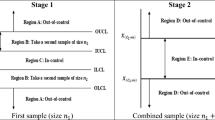Abstract
The quality of multi-stage stochastic optimization models as they appear in asset liability management, energy planning, transportation, supply chain management, and other applications depends heavily on the quality of the underlying scenario model, describing the uncertain processes influencing the profit/cost function, such as asset prices and liabilities, the energy demand process, demand for transportation, and the like. A common approach to generate scenarios is based on estimating an unknown distribution and matching its moments with moments of a discrete scenario model. This paper demonstrates that the problem of finding valuable scenario approximations can be viewed as the problem of optimally approximating a given distribution with some distance function. We show that for Lipschitz continuous cost/profit functions it is best to employ the Wasserstein distance. The resulting optimization problem can be viewed as a multi-dimensional facility location problem, for which at least good heuristic algorithms exist. For multi-stage problems, a scenario tree is constructed as a nested facility location problem. Numerical convergence results for financial mean-risk portfolio selection conclude the paper.
Similar content being viewed by others
References
Dupačová, J., G. Consigli, and S.W. Wallace. (2000). “Generating Scenarios for Multistage Stochastic Programs.” Annals of Operations Research, 100, 25–53.
Dupačová, J., N. Gröwe-Kuska, and W. Römisch. (2003). “Scenario Reduction in Stochastic Programming: An Approach Using Probability Metrics.” Mathematical Programming, Series A, 95, 493–511.
Fourer, R., D. Gay, and B. Kernighan. (2002). AMPL: A Modeling Language for Mathematical Programming. Duxbury Press/Brooks/Cole Publishing Company.
Heitsch, H. and W. Römisch. (2003). “Scenario Reduction Algorithms in Stochastic Programming.” Computational Optimization and Applications, 24(2–3), 187–206.
Heyde, C. (1963). “On the Property of the Lognormal Distribution.” Journal of the Royal Statistical Society, Series B, 25, 392–393.
Høyland, K. and S.W. Wallace. (2001). “Generating Scenario Trees for Multistage Decision Problems.” Management Science, 47, 295–307.
Koivu, M. (2005). “Variance Reduction in Sample Approximations of Stochastic Programs.” Mathematical Programming, Series A, 103(3), 463–485.
Kouwenberg, R. (2001). “Scenario Generation and Stochastic Programming Models for Asset Liability Management.” European Journal of Operation Research, 134, 279–292.
Monge, G. (1781). “Mémoire sur la théorie des déblais et remblais.” Hist. Acad. R. Sci. Paris.
Pennanen, T. (2005). “Epi-Convergent Discretizations of Multistage Stochastic Programs.” Mathematics of Operations Research, 30(1), 245–256.
Pennanen, T. and M. Koivu. (2005). “Epi-Convergent Discretizations of Stochastic Programs via Integration Quadratures.” Numerische Mathematik, 100(1), 141–163.
Pflug, G. (2001). “Scenario Tree Generation for Multiperiod Financial Optimization by Optimal Discretization.” Mathematical Programming, Series B, 89, 251–257.
Rachev, S. and W. Römisch. (2002). “Quantitative Stability in Stochastic Programming: The Method of Probability Metrics.” Mathematics of Operations Research, 27, 792–818.
Rachev, S.T. (1991). Probability Metrics and the Stability of Stochastic Models. New York: John Wiley and Sons.
Rüschendorf1998]RachevRueschendorf1998 Rachev, S.T. and L. Rüschendorf. (1998). Mass Transportation Problems. Vol. I, Probability and its Applications. New York: Springer-Verlag.
Rockafellar, R. and S. Uryasev. (2000). “Optimization of Conditional Value-at-Risk.” The Journal of Risk, 2(3), 21–41.
Ruszczynski, A. and A. Shapiro (Eds.). (2003). Stochastic Programming, Vol. 10 of Handbooks in Operations Research and Management Science. Elsevier.
Vallander, S. (1973). “Calculation of the Wasserstein Distance Between Probability Distributions on the Line.” Theory of Probability and Its Applications, 18, 784–786.
Wallace, S.W. and W.T. Ziemba (Eds.). (2005). Applications of Stochastic Programming, MPS-SIAM Series on Optimization. SIAM.
Zolotarev, V. (1983). “Probability Metrics.” Theory of Probability and Its Applications, 28, 278–302.
Author information
Authors and Affiliations
Corresponding author
Rights and permissions
About this article
Cite this article
Hochreiter, R., Pflug, G.C. Financial scenario generation for stochastic multi-stage decision processes as facility location problems. Ann Oper Res 152, 257–272 (2007). https://doi.org/10.1007/s10479-006-0140-6
Published:
Issue Date:
DOI: https://doi.org/10.1007/s10479-006-0140-6




